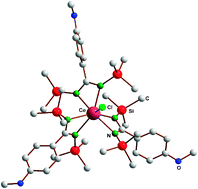For decades, the organometallic chemistry of the rare earth elements was largely dominated by the cyclopentadienyl ligand and its ring-substituted derivatives. A hot topic in current organolanthanide chemistry is the search for alternative ligand sets which are able to satisfy the coordination requirements of the large lanthanide cations. Among the most successful approaches in this field is the use of amidinate ligands of the general type [RC(NR′)2]− (R = H, alkyl, aryl; R′ = alkyl, cycloalkyl, aryl, SiMe3) which can be regarded as steric cyclopentadienyl equivalents. Closely related are the guanidinate anions of the general type [R2NC(NR′)2]− (R = alkyl, SiMe3; R′ = alkyl, cycloalkyl, aryl, SiMe3). Two amidinate or guanidinate ligands can coordinate to a lanthanide ion to form a metallocene-like coordination environment which allows the isolation and characterization of stable though very reactive amide, alkyl, and hydride species. Mono- and trisubstituted lanthanide amidinate and guanidinate complexes are also readily available. Various rare earth amidinates and guanidinates have turned out to be very efficient homogeneous catalystse.g. for ring-opening polymerization reactions. Moreover, certain alkyl-substituted lanthanide tris(amidinates) and tris(guanidinates) were found to be highly volatile and could thus be promising precursors for ALD (= Atomic Layer Deposition) and MOCVD (= Metal-Organic Chemical Vapor Deposition) processes in materials science and nanotechnology. This tutorial review covers the success story of lanthanide amidinates and guanidinates and their transition from mere laboratory curiosities to efficient homogeneous catalysts as well as ALD and MOCVD precursors.

You have access to this article
 Please wait while we load your content...
Something went wrong. Try again?
Please wait while we load your content...
Something went wrong. Try again?


 Please wait while we load your content...
Please wait while we load your content...